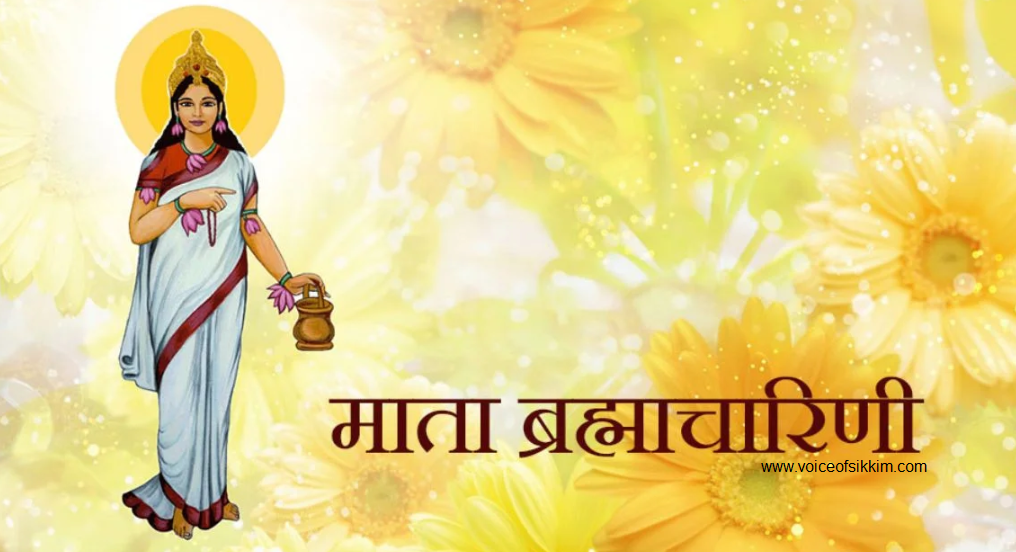
The second day of Navratri, known as Dwitiya, is dedicated to Goddess Brahmacharini, the second form of Goddess Durga. The word “Brahmacharini” is derived from “Brahma” (penance) and “Charini” (female follower), meaning “one who practices devout austerity.” She is revered for her immense devotion, perseverance, and the embodiment of spiritual knowledge and wisdom.
Symbolism of Goddess Brahmacharini:
– Appearance: Goddess Brahmacharini is depicted as a serene, ascetic goddess. She is dressed in white and holds a mala (rosary) in her right hand and a kamandal (water pot) in her left hand.
– Virtues: She symbolizes penance, devotion, and purity. Her form represents austerity and spiritual enlightenment, as she underwent intense penance to attain Lord Shiva as her husband.
– Story: According to mythology, she is the unmarried form of Goddess Parvati who performed rigorous penance for thousands of years to win the love and devotion of Lord Shiva. Her dedication and self-sacrifice earned her the name Brahmacharini.
Spiritual Significance:
– Path of Discipline: Worshipping Brahmacharini on the second day of Navratri instills qualities like self-discipline, courage, and patience. She inspires devotees to practice restraint and focus on their spiritual goals.
– Meditative Power: Devotees are encouraged to connect with their inner selves through meditation and to nurture calmness and resolve. Brahmacharini guides seekers along the path of devotion (bhakti) and penance.
Rituals on the Second Day:
1. Puja Vidhi:
– The rituals begin with invoking Goddess Brahmacharini with sacred mantras and offerings. She is offered flowers, fruits, sweets, and especially sugar, as it is believed to bring calmness and humility.
– Devotees light an oil lamp (diya) in front of her idol or picture and recite the Brahmacharini Stotra or hymns dedicated to her.
2. Fasting:
– Many devotees observe a fast (vrat) on this day, either consuming only fruits and milk or opting for a strict water-only fast.
3. Color of the Day:
– Green is the auspicious color of the second day. It represents growth, fertility, and harmony.
4. Mantra for the Day:
– Chanting the mantra of Brahmacharini helps devotees gain focus, patience, and spiritual awakening.
– Mantra:
“Om Devi Brahmacharinyai Namah”
Cultural Aspects:
– In many regions, people dress in green attire to honor the goddess and participate in evening Garba and Dandiya Raas, traditional dances associated with Navratri.
– Temples are adorned with flowers, and devotees engage in collective prayers and bhajans (devotional songs).
Regional Observances:
– In states like Gujarat and West Bengal, the second day of Navratri marks the continuation of the grand festive atmosphere, with special events and cultural programs organized to honor the goddess.
– In West Bengal, this period also coincides with Durga Puja, and grand pandals (temporary shrines) begin to be set up as the celebrations build up toward the main Durga Puja days.
Overall, the second day of Navratri is a time to invoke inner strength and discipline by worshipping Goddess Brahmacharini, who embodies self-control, devotion, and wisdom.
Navratri is a nine-day Hindu festival dedicated to the worship of the goddess Durga and her various forms. Each day of Navratri is associated with one of the nine forms of Durga, and devotees celebrate by offering prayers, performing rituals, and often fasting.





